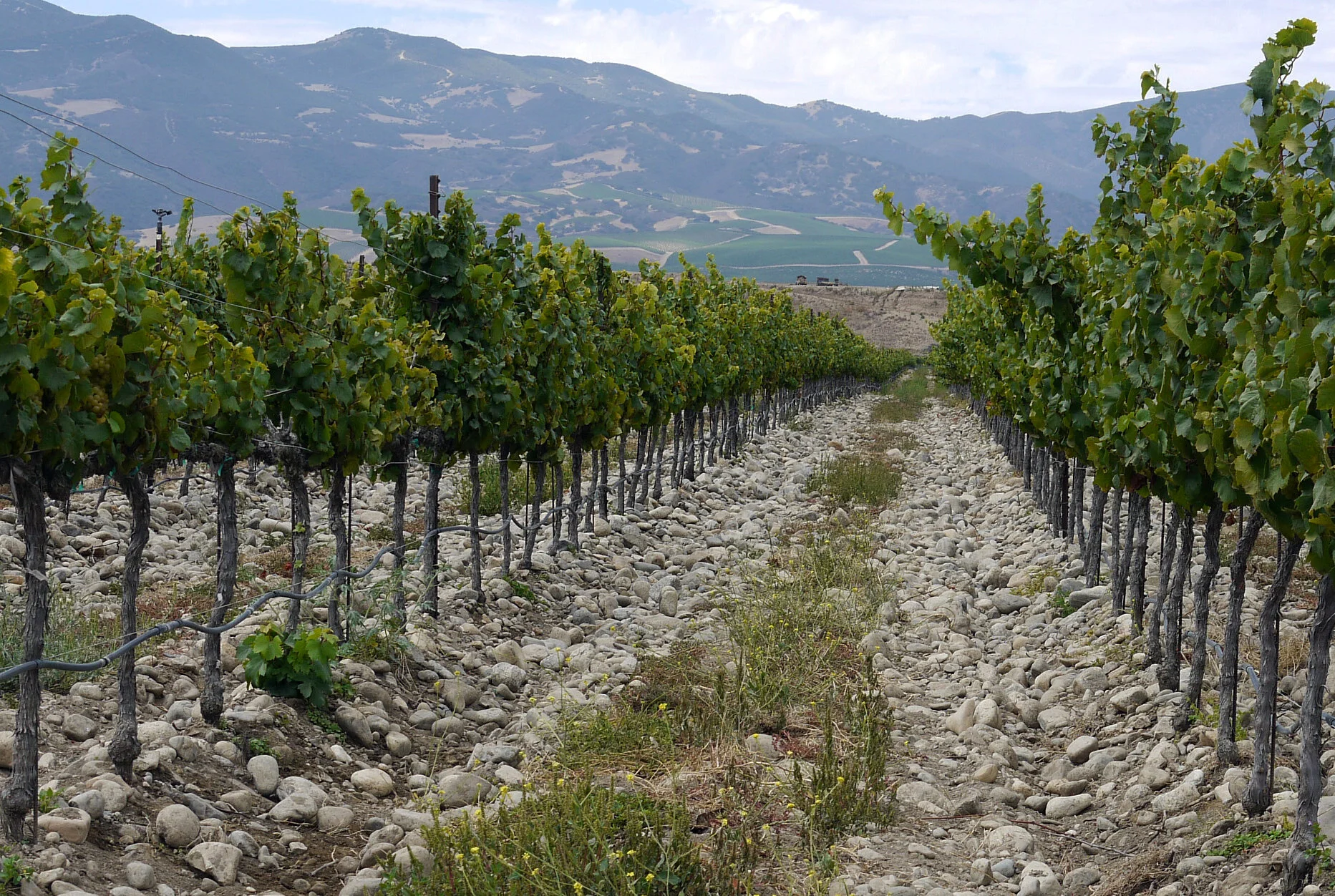


Monterey County
Monterey County
Located approximately two hours south of San Francisco, Monterey County is endowed with a magical coastline. It is part of the California’s Central Coast, which unlike most of California rests on the Pacific Plate - a tectonic plate of up-risen seabed. The coastal influence from the rugged Pacific Ocean in combination with the sedimentary based subsoils of an ancient seabed are unique foundational aspects that coalesce and contribute to Monterey County’s rare and unparalleled grape-growing environment.
Monterey County's 'Blue Grand Canyon' & the 'Thermal Rainbow' - Image Courtesy of MCVGA.
Positioned north-to-south, the Salinas River Valley begins at Monterey Bay and is formed between two dramatic mountain ranges; the coastal Santa Lucia Mountains, and the eastern Gavilan Mountains. The Salinas Valley is a direct and unobstructed corridor from the Pacific Ocean and as such creates a Thermal Rainbow, whereby as one moves south away from Monterey Bay the temperature rises dramatically. The Thermal Rainbow effect is heightened in Monterey County because of a deep, subterranean trench found just offshore at Monterey Bay.
The Blue Grand Canyon is a marine canyon similar in size and scope to the Grand Canyon. The deep underwater canyon affects the water-temperature and in turn the level of regional cooling; the saturation and penetration of fog as well as the strength of winds that sweep through the Salinas Valley. The result of this unique geographic condition is extreme cooling and variances in temperature across the County. Diverse by nature, Monterey County and the winegrowing regions within benefit from a multitude of enviable geological and geographical conditions which allows them produce fruit of unparalleled character.

Arroyo Seco AVA
THE ANCIENT RIVERBED
Arroyo Seco AVA
THE ANCIENT RIVERBED
Monterey’s Arroyo Seco AVA is many things: windblown, numbingly cold, fog laden, semi-arid, rock strewn, austerely beautiful. In essence, the perfect grape source for Mercy Vineyards.
Monterey County, CA
The Arroyo Seco AVA is found 40 miles south of Monterey Bay. A small region, it is comprised to two townships; Soledad and Greenfield. In the rural, western extremes of these towns the Santa Lucia Mountains rise dramatically, creating the western boundary of the Salinas Valley, and provide the unique setting for one of California's earliest recognized viticultural areas. It is in this landscape that a transverse waterway from the mountains carved the distinct geography and geology, and ultimately converges with the maritime influences of the deep, cold waters of the Pacific Ocean. Ultimately, the confluences of so many distinct geographic factors unite to form this small, finite growing region.
The historic appellation was given AVA status in 1983. The growing region is most prominently distinguished by its eponymously named waterway; the Arroyo Seco River is a seasonal creek that brings rain water and snowmelt from the Santa Lucia Mountains and the Los Padres National Forrest to the Salinas Valley. Over the millenniums the pressure of this natural water-release created a diverse geography; carving landscape, dumping rocks and filling a deep subterranean aquifer with clean, purified water.
The Arroyo Seco AVA’s Ancient Riverbed - Following the seasonal tributary, this fanned landscape is bifurcated by benches. The palisades that define these benches showcase an ancient waterway where due to its low elevation is where eons of washed out shale and granite has collected. Moreover, this section of terrain is directly exposed to the strong maritime influences that plague the Salinas Valley - an "open throat" valley which extends from the deep, cold waters of the Pacific Ocean. The ancient riverbed terrain experiences dense fogs and howling winds. It is further distinguished by meager soil conditions; river rocks litter the sandy surface-soil depriving the topsoil of nutrients while dense, hardpan lens rests just feet below ground promote root stress and hamper vine vigor.




